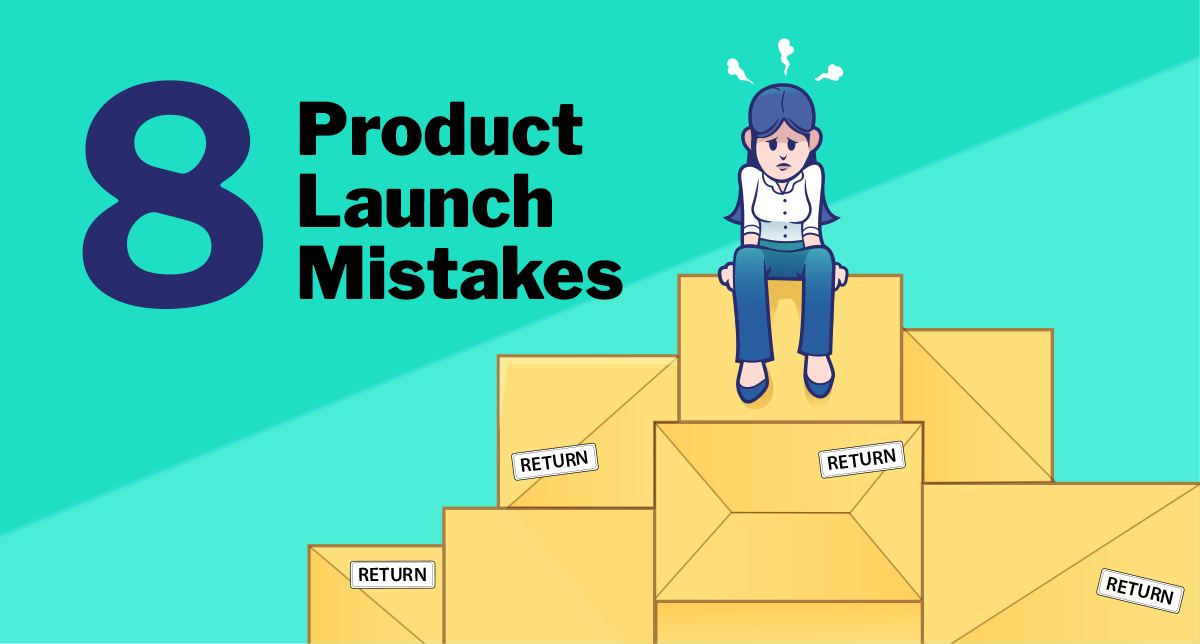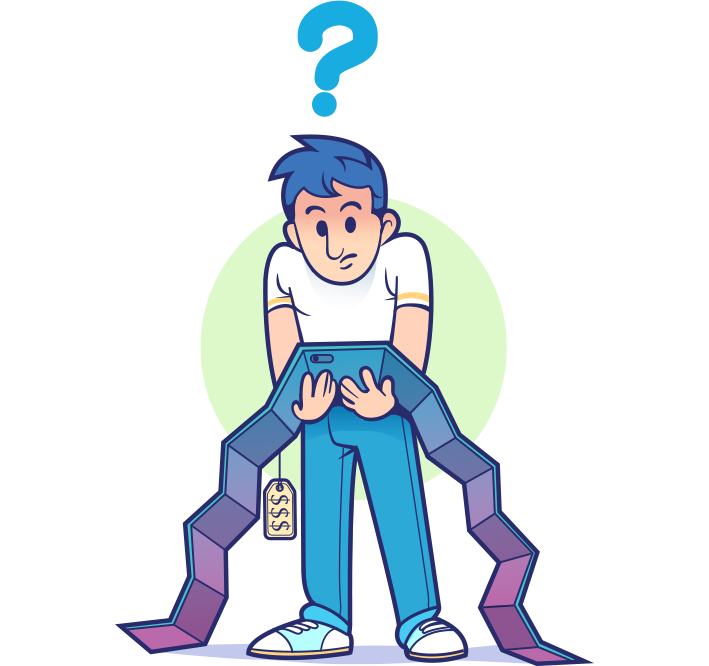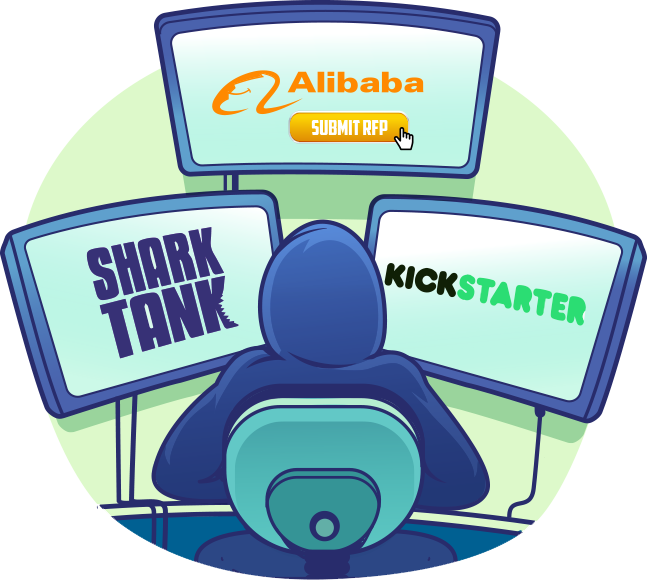
Launching a new product is an amazing opportunity—and a massive responsibility. The full potential is waiting, and the difference between getting it right or wrong can be the gulf from a billion-dollar success story to costly and embarrassing failure.
Whether you work in product marketing, or are simply fascinated by it, you’ve heard many different narratives. From Instant Pot’s meteoric cooking disruption to Segway’s surprising faceplant, it’s the kind of stuff nobody could make up, and even experts struggle to predict.
When a product succeeds, it’s almost always a confluence of many things done right. Product failure, on the other hand, can come from a singe significant mistake. And when you break it down systematically, most huge product marketing failures could be foreseen if not prevented in the first place. Not only are the mistakes quite common, but because most are anchored in human nature, they tend to repeat themselves. Here are the eight biggest causes of product failure:
1. Faulty Positioning
We’ve all come across products that take an inordinate amount of thinking to understand. “What the hell is this for?” should never, ever be a question in the consumer’s mind. Even highly technical products with super-smart purchasers should make their Why clear at a glance. Ironically, it can take tremendous effort to be so direct and simple, which is why brands hire product marketing agencies. Getting positioning right is the single most foundational piece to product success.

2. Unvalidated Beliefs
How many people will pay two thousand dollars for a folding smartphone? That’s the kind of question marketers attempt to answer in conducting validation research. It’s not easy to do, especially with innovative or luxury products—yet neglecting to validate the market’s price sensitivity and ultimate desire can be deadly, especially when margins and funding don’t leave room for adjustments after launch. Huge companies can afford to be wrong from time to time (take Google Glass), but others should not rely on assumptions.
3. Under-thinking the Customer Need
Even the most useful, most innovative products can fall flat by failing to understand the real customer need they solve—and convey it to the customer. You’ve heard the adage about the buyer of a drill needing a hole, not the tool itself. Well, even that’s a little shortsighted. Nobody yearns for a quarter-inch hole. The real motivation is to build something that will move the owner to a desired future state: perhaps better organization and less clutter by having a cabinet. At Graphos we’ve developed our own methodology for identifying Customer Jobs and the desired future state that motivates your buyer. We call it CLIMB™: Customer Life Improving Mechanisms and Benefits. Whatever evaluation system you use, it’s essential to know and articulate the life-improving benefit your product brings. (And seriously, if “life-improving” seams grandiose, you possibly don’t have a viable product.)

4. Hitting the Wall
It’s not uncommon for an inventor to take a product to market using his or her life savings, betting that initial sales will kick in and finance growth. Almost invariably, costs come in higher than anticipated at every step, and capital soon becomes a problem. That’s why it’s important to build numerous contingencies and if/then options into your business plan, from sources of funding to strategies for when expectations aren’t met. Going to market is often an epic journey, and financial preparedness is a common thread among successful products.
5. False Urgency
Getting a new product to market takes time, and it’s hard to be patient. Especially when you’re losing sleep about being out-hustled by competitors. It’s common to skip important steps and ignore blind spots, especially when unforeseen delays protract the Go-to-Market schedule. Falling behind can have consequences, but launching prematurely is always a bigger mistake.
6. Shiny Penny Syndrome
Especially with software products, it’s really hard to stick with a Minimum Viable Product (MVP) and not get caught up in adding features. Every day along the way, you get new ideas or see cool things—shiny pennies—that might make the product more enticing. Stick with the plan, evaluate features (we have a system for that) and implement the ones that add the most value at the lowest cost and risk. A surplus of features not only ratchets up costs but will bury core benefits and sink the product.

7. Grand Theft I.P.
With inventors proudly sharing their nascent ideas on crowdsourcing platforms like Kickstarter and reality shows like Shark Tank, it can be easy for copycats to run with an idea and beat the original to market. You know they’re trolling. And you’ve probably heard about the crisis Amazon is facing over counterfeit products. That’s why it’s more important than ever to keep your cards hidden and safeguard your intellectual property with patents and trademarks in any market you’ll ever care about. (Ask me about the client whose product shipment was held by Chinese customs until he paid a ransom for his own trademark registered by a third party in China.)
8. Undervaluing (or Under-utilizing) GTM Strategy
In the hurry to get from prototype (or napkin sketch) into consumer hands, it’s easy to skip steps and overlook looming fatal flaws. Following a defined, thoroughly flushed-out Go-to-Market strategy not only gives you the guardrails you need, it also helps you see around corners and watch your back by skirting the countless distractions. I’ve developed a really buttoned-down and highly focused approach in our Innovative Products Go-to-Market Roadmap™. Whatever plan you use, know when to stick to it and when to correct course or re-align.
Taking a new product to market can be the most thrilling and rewarding thing you’ll ever do. It’s a blast when you know how to do it well. That’s why I’ve chosen to focus the second quarter century of my career on leveraging Graphos’ expertise as a top product marketing agency, deploying product launches for innovative products with Obsession Brand™ potential. Approach it like you’ve only got one shot—because quite possibly that is the case.
Laurier Mandin is president of Graphos, the Edmonton web design company, branding consultancy and digital marketing agency he founded in 1993.